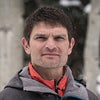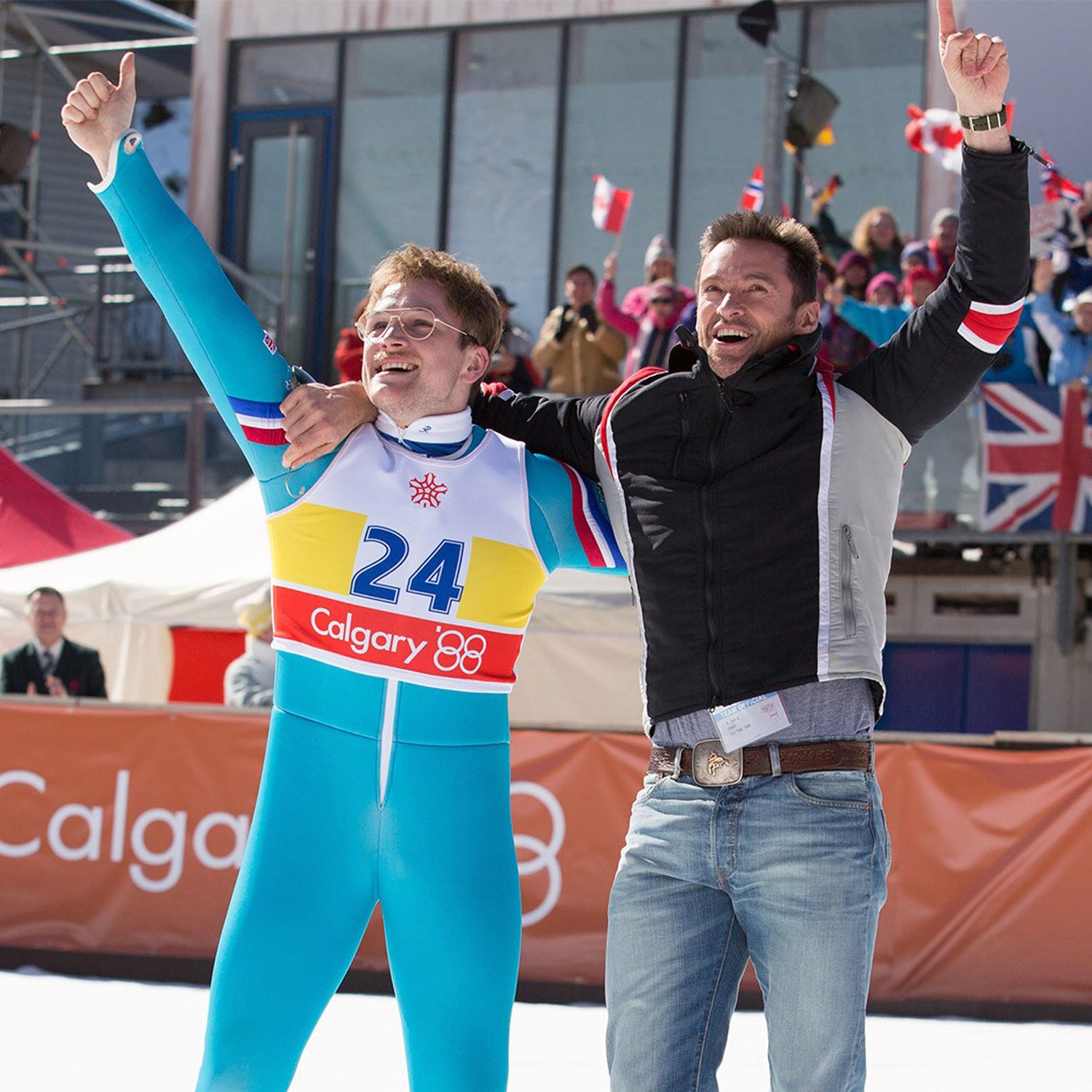When Lindsey Van heard that a feature film was in the works about famous British ski jumper Eddie “the Eagle” Edwards, she and other elite jumpers more or less rolled their eyes. Ski jumping, after all, is among the most nuanced and obscure Olympic winter sports, and Van was skeptical that Hollywood would portray it accurately on the big screen.
“Especially a movie about someone who a lot of people thought was a joke in the sport,” said the 31-year-old Van, an American who won the 2009 ski jumping world championship and placed 15th at the 2014 Olympics after lobbying to get women’s jumping included in the games.
As an up-and-comer in the late 1990s, Van shared a coach and jumped with Edwards (now 52 years old) every day for a period in Lake Placid, New York. She retired in 2014 after a 20-year career and now coaches for the U.S. Ski Team and Park City Nordic Ski Club in Utah. We asked her to help fact-check Eddie the Eagle, 20th Century Fox’s latest film, starring Hugh Jackman and Taron Egerton, which premiered at Sundance in January and opened in theaters nationwide over the weekend.
“I felt more of a connection to the sport through the film.”
For those unfamiliar with Edwards’ story, he was a plasterer from a city west of Oxford who took up ski jumping in the hope that it might earn him a trip to the 1988 Olympics in Calgary, Alberta. And it did, if only because there were no other British ski jumpers. He inspired the world as a lovable, charismatic underdog even while finishing dead last in Calgary. He continued to jump for another decade, but he never improved to a point of contention.
Eddie the Eagle has for inventing many of the facts of Edwards’ story, but we are less concerned with the film’s creative choices and more interested in whether it gets ski jumping right. So we asked Van to break it down for us. She was pleasantly surprised by the film—it’s a feel-good sports story—but says the portrayal of her life’s work left a lot to be desired.
The Technique
The jumping technique in the film was “pretty accurate,” Van says, with one exception: every competitor in the film, including Matti Nykänen, a real-life ski-jumping legend known as “the Flying Finn,” soared with his skis wedged in a V. This is how the best jumpers in the world fly, but the technique wasn’t introduced until 1991—three years after the Calgary Olympics. In 1988, every competitor was still jumping with his skis pointed forward and parallel, like the number 11. Only after Swedish jumper Jan Boklöv later used the V to stave off a crash did the rest of the world realize it created more surface area and thus more “lift,” which enables longer jumps.
“They definitely had jumpers who were good,” says Van, who began jumping in 1992, referring to the filmmakers. “I would’ve liked to have seen a jumper good enough to jump without the V technique, but I heard they couldn’t find anybody.”
The Learning Curve
Edwards graduates from the 15-meter jump to the 40-meter jump almost immediately in the film, and the leap in skill level between those distances is much greater than it’s portrayed, Van says. That transition usually takes “several hundred jumps,” she says. However, when Edwards’ fictional coach, Bronson Peary (played by Jackman), tells Edwards that it will take four years for him to master the 70-meter jump, that timeline holds true in real life, Van said.
The Lingo
Peary delivers some catchy coaching lines—notably “Be the wing of the bird” and “You’re like gum in my shoe. You never give up”—but largely steers clear of technical jargon, which Van appreciated. He did deploy some classic mental motivation during the film, however.
“As a jumper, we had a saying,” Peary tells Edwards during a training scene. “You’re never bigger than the hill.”
Van heard similar messages throughout her career, with good reason: “You’re going 60 mph and jumping headfirst into the air to try to clear an area the size of a football field,” she says.
The Purpose
In one of the most memorable scenes, Nykänen and Edwards—the best and worst in the 1988 Olympic field—ride an elevator toward the top of the jump. Nykänen, who won three gold medals in Calgary, turns to Edwards and explains why they are alike. “We jump to free our souls,” he says. It sounds like a Hollywood screenwriter’s take, but Van said it was spot on.
“I loved that,” she said. “That’s exactly why I jumped. Yes, I liked winning, but I jumped more because it was fun and provided an addictive feeling that I wanted to keep having. So when Matti said that, I was like, ‘Yes!’ I felt more of a connection to the sport through the film.”


